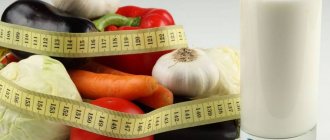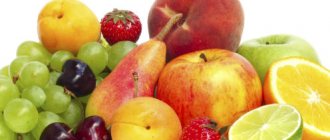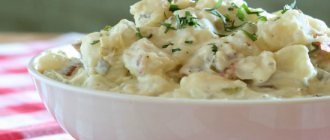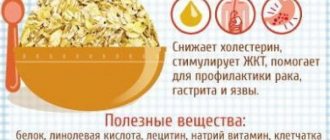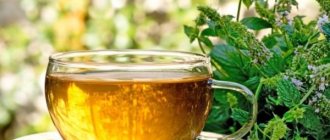What is Fodmap?
FODMAP substances are short-chain carbohydrates that are not digested in the digestive tract and are not absorbed by the human body.
FODMAP is an acronym for the following fermentable carbohydrates:
- Oligosaccharides : Wheat, rye, legumes, various vegetables such as onions and garlic.
- Disaccharides : Milk, cream cheese, yogurt. Lactose is the main carbohydrate.
- Monosaccharides : Various fruits, including dates, figs, mangoes, agave, and honey. Fructose is the main carbohydrate.
- Polyols : Some fruits and vegetables such as blackberries, lychees, and some low-calorie sweets such as sugar-free gums.
These substances contribute to an increase in fluid content in the lumen of the digestive tube and increased gas formation. As a result, there is a pathological stretching of the intestinal wall, leading to a wide range of unpleasant symptoms: bowel problems such as constipation or diarrhea, bloating and pain in the lower abdomen.
The FODMAP diet was developed by Australian scientists to improve the condition of patients suffering from irritable bowel syndrome (there is evidence of effectiveness also in Crohn's disease).
A low FODMAP nutrition system involves the exclusion or maximum reduction of the described substances in the diet of patients. As a result, there is a decrease in symptoms and an improvement in quality of life.
FODMAPs are a group of fermentable carbohydrates that contribute to a wide range of digestive disorders. Limiting such substances in the diet has a beneficial effect on the course of diseases such as Crohn's disease and irritable bowel syndrome.
What can you eat on the FODMAP diet?
The Fodmap diet (the list of foods that are allowed for consumption is compiled individually in each specific case) has a number of restrictions that must be observed until the condition stabilizes and the unpleasant symptoms are relieved.
According to this nutrition system, all products are divided into 3 large groups:
- products whose consumption is allowed on a limited basis;
- products that will have to be excluded from the menu completely;
- permitted products.
Foods to Avoid Completely
The low-Fodmap diet is a rather complex nutritional system, and in order to make it easier for people suffering from chronic intestinal diseases to navigate the whole variety of products, the developers have combined foods prohibited for consumption into groups based on the large amounts of carbohydrates they contain.
In accordance with this division, the following carbohydrate compounds (sugars) should be avoided in the body through food:
- polyols , which are also called sugar alcohols or sweeteners. They are found both in natural form in natural gifts in some fruits (yellow and blue plums, sweet and sour cherries, avocados, apricots, nectarines), and in artificial additives and sweeteners (sorbitol or glucite, xylitol, maltitol, mannitol);
- fructose – found in fruits, as well as honey and syrups. Restrictions do not apply, of course, to all products that contain this carbohydrate, but only to some of them. Selection is carried out based on the ratio of glucose and fructose in the product. It is believed that those fruits in which these 2 components are present in equal proportions are absorbed by patients with various inflammatory bowel pathologies better than those that contain more fructose than glucose. The latter (banned) products include mangoes, apples, pears (regardless of varieties and types, any of these products are prohibited). It is also prohibited to eat honey and consume corn syrup;
- lactose - milk sugar, which is rich in milk of animal origin (sheep, goat, cow). With poor functioning of the gastrointestinal tract, lactose intolerance most often develops, which causes bloating, increases the accumulation of air in the intestines (gases), and provokes stool upset. This occurs due to the lack of a special catalyst or enzyme, lactase, which is responsible for the breakdown of this carbohydrate. Since patients with IBS and IBD often have a lack of various enzymes, especially lactase, they should avoid consuming not only milk, but also the entire line of dairy products - fermented baked milk, kefir, various yogurts, curd cheeses, whey, soft cheeses , cottage cheese of varying degrees of fat content;
- fructans are sugars that are long compounds (chains) of fructose molecules that are difficult to digest, since the intestinal flora does not have enzymes capable of destroying these formations. Fructans can be found in artichokes, agave, yacon (a root vegetable that tastes like apple and watermelon), wheat;
- galactans - galactose molecules connected to each other. They are not broken down or absorbed in the human body for the same reason as fructans - due to the lack of an enzyme that is necessary to destroy molecular chains. There are many galactans in beans, red, green and yellow lentils, cabbage, soybeans, regular peas and its Turkish variety - chickpeas.
Foods to include in your diet
Foods low in difficult-to-fermentable carbohydrates should be included in the diet of patients with chronic inflammatory bowel diseases. Their list is quite extensive, which will allow patients to receive all the necessary micro- and macroelements.
| Vegetable row | Zucchini (thin-skinned zucchini), bell peppers, potatoes, bok choy (a hybrid variety of cabbage without heads), carrots, cucumbers, lettuce (lettuce), pumpkin, spinach, tomatoes, butternut squash, spinach. |
| Fruit and berry set | Unripe bananas, green, blue and pink grapes, melon, kiwi, pineapples, raspberries, strawberries, lingonberries, cranberries, blueberries, guava, blueberries, all representatives of the citrus family - lemons, oranges, tangerines, grapefruit, lime. |
| Dairy products | Hard cheeses made from animal milk - Colby, Parmesan, cheddar, plant milks - from coconut pulp, almonds, rice. |
| High protein foods and meat | Chicken and quail eggs, chicken and turkey (preferably homemade), veal, beef, lamb (meat from young lambs), tempeh (soy product). |
| Groceries, bread | Gluten-free pasta, pasta, spaghetti and bread, rice, corn, buckwheat, quinoa, spelled wheat. |
| Flavor enhancers, dressings (oils, spices, additives, seasonings) | Soy dressing, natural apple cider vinegar, olives, mustard, sugar maple syrup, ghee (clarified butter), coconut oil, olive oil, almost all herbs and spices. |
It is also allowed to eat some rather expensive types of nuts, for example, pecans - nuts vaguely reminiscent of walnuts in taste, but with a more delicate texture. In addition to pecans, you can eat some peanuts, pine nuts or macadamia nuts per day. Pumpkin seeds, which can be eaten separately or added to vegetable salads, will also benefit a sore intestine.
Products whose consumption should be limited
The peculiarity of the low-Fodmap diet is that not all foods can be clearly classified as prohibited or permitted. Some of them belong to the borderline links of the food chain, since they are not completely prohibited, but can still worsen the condition of patients with IBD if consumed frequently or in excess.
List of high FODMAP foods and low FODMAP alternatives to form a complete diet
For example, legumes such as green peas and corn are not completely prohibited, but you should not eat them often. The same rule applies to some fruits with large seeds (avocado, peach, nectarine), almond and hazelnut tree nuts, and certain vegetables (Brussels sprouts, asparagus, potatoes, pumpkin).
The benefits of such a diet
The low FODMAP diet has been tested on tens of thousands of people in more than 30 scientific studies. The positive effects described below have an evidence base.
Reduction of dyspeptic disorders
Disorders in individuals with irritable bowel syndrome can vary widely. They include: increased gas production, diarrhea or constipation, pain in the lower abdomen (usually worse at night or before bowel movements).
According to scientists, the distinctive unpleasant subjective symptoms are pain and bloating, which affect more than 80% of patients.
American scientists have found that these symptoms dramatically change the quality of life and depress mood. 90% of respondents claim that they are willing to shorten their lives by a quarter in exchange for the opportunity to become healthy again. About 18% of patients take narcotic analgesics to relieve pain.
Excluding FODMAP foods from the diet has a beneficial effect on the general condition of patients. According to one of the large foreign meta-analyses, when following a low FODMAP diet, there is a decrease in the severity of abdominal pain and increased gas formation, and normalization of mood and brain function.
According to British experts, this type of diet can also effectively combat constipation or diarrhea.
Thus, a diet low in FODMAPs can reduce the severity of a number of dyspeptic disorders (stool disorders, flatulence, abdominal pain).
Improving quality of life
People suffering from irritable bowel syndrome experience significant limitations in their usual activities, some lose not only their work and social adaptation, but also their ability to self-care.
According to Australian scientists, the Fodmap diet leads to a decrease in the severity of the main symptoms of the disease. The study was based on a questionnaire survey of patients using the irritable bowel syndrome symptom severity scales (IBS-SSS and IBQ-QOL).
A diet with limited FODMAP foods significantly reduces the severity of pathological manifestations of the digestive system, which helps normalize mood and increase the desire for life.
What happens when you eat them?
Most FODMAPs pass through most of your intestines unchanged. They are completely resistant to digestion and fall under the category of dietary fiber.
But some carbohydrates only function as FODMAPs in some people. These include lactose and fructose.
General sensitivity to these carbohydrates also varies from person to person. In fact, scientists believe they contribute to digestive problems like IBS.
When FODMAPs reach the colon, they are fermented and used by gut bacteria as an energy source.
The same thing happens when dietary fiber feeds your friendly gut bacteria, leading to various health benefits.
However, friendly bacteria tend to produce methane, while bacteria that feed on FODMAPs produce hydrogen, another type of gas that can lead to gas, bloating, stomach cramps, pain, and constipation (3).
Many of these symptoms are caused by intestinal enlargement, which can also make your belly appear larger (4).
FODMAPs are also osmotically active, meaning they can pull water into your intestines and promote diarrhea.
Summary:
FODMAPs are poorly absorbed in some people's bodies, causing them to reach the colon. They draw water into the intestines and are fermented by intestinal bacteria, producing hydrogen.
Who is it shown to?
The diet is indicated mainly for people who suffer from irritable bowel syndrome.
The most important thing that needs to be done before prescribing a diet is to make sure that the diagnosis is correct (confirmed by laboratory and instrumental means), to exclude all possible other pathologies that have a similar clinical picture.
In addition to IBS, the diet can be used for the following conditions:
- Crohn's disease.
- Nonspecific ulcerative colitis.
- Celiac disease.
- Endometriosis.
- Fibromyalgia.
- Functional dyspepsia.
- Scleroderma.
- Diverticulitis.
- Chronic fatigue syndrome.
However, evidence regarding the effectiveness of the diet for written pathologies is almost completely absent. Therefore, dietary changes cannot be recommended.
Before starting treatment, it is extremely important to enlist the support of a specialist. Only a doctor can competently assess the state of health and make the right decision.
A low FODMAP diet has a fairly wide range of indications, but not all of the effects have been scientifically proven. Currently, a significant positive effect is observed only in relation to irritable bowel syndrome.
How to follow correctly - 3 steps
The FODMAP protocol is a complex nutrition system. A full transition includes several stages that must be followed.
Stage 1: Restriction
The basis of this phase is to strictly limit the consumption of any high FODMAP foods.
The maximum duration of the first stage is 3-8 weeks. Don't stay at this stage any longer.
Thoughtlessly eliminating all FODMAP foods for a long time will lead to the body not receiving enough important probiotics and prebiotics, which will lead to dysbiosis.
It is necessary to begin the transition to the FODMAP nutrition protocol only under the supervision of a doctor (preferably a nutritionist). The specialist is able to exclude all other diseases that have similar symptoms. This is extremely important, since each disease requires an individual dietary approach.
Stage 2: Food Challenge
At this stage, high FODMAP foods are added to the diet one at a time. The goals of such an experiment are:
- Determination of the body's individual sensitivity to various groups of FODMAP foods.
- Establishing a maximum “threshold” level of FODMAP substances that a person can consume per day.
Experts advise adding one “new” product to the diet, eating it for 2-3 days and monitoring the body’s reaction. Even if the body reacts normally to a product, you still eliminate it after 2-3 days and add the next one to the diet.
The total duration of the entire stage is no more than 1.5 months.
Stage 3: Personalization
So, in the second stage, you have identified which food map products you tolerate well and which ones poorly.
The final third step is to reintroduce as many high FODMAP foods that have been shown to be well tolerated into the diet. At the same time, you need to monitor the severity of the symptoms of the underlying disease (they should not increase).
At the third stage, it is necessary to maintain the maximum possible variety (periodically include even poorly tolerated foods in small quantities into the diet). All this, according to foreign experts, will improve intestinal health and quality of life in the long term.
This final phase is also called the “personalized” or “modified” Fodmap diet because it is different for each person. Only such an individual diet can be followed for a long time.
The low FODMAP diet is a complex three-step process. In order to achieve long-term results, it is necessary to adhere to the specifics of each stage. This is the only way to reduce the severity of symptoms and improve the quality of life.
FODMAP substances
To avoid complications and health problems, it is important to study the effect of FODMAP substances in advance. Their characteristics are as follows:
- Lactose is milk sugar, the high content of which is in cow, goat, sheep, and human milk. When it enters the intestines, the product is broken down by lactose, molecules appear - glucose, galactose, which are absorbed. With frequent consumption of foods rich in lactose, adults experience problems with the gastrointestinal tract: heaviness, indigestion, flatulence, etc.
- Fructose is a carbohydrate, a large amount of which is found in honey, fruits, syrups (corn, agave syrup). Due to the absence of a special enzyme, fructose is not completely digested. High-quality absorption of the substance depends on the glucose content in foods. If the ratio of fructose and glucose is 1:1, then the substances will be perfectly digested. When consuming foods with large amounts of free fructose, problems with the gastrointestinal tract may occur. For this reason, when following the FODMAP diet, it is not recommended to eat apples, mangoes, cherries, and artichokes. Keep in mind that the intensity of fructose absorption depends on the characteristics of the “participants” in the process, the speed of small intestinal transit, and the presence of increased bacterial growth in the small intestine.
- Fructans are carbohydrates that are not absorbed (not absorbed in the small intestine). This process does not occur due to the absence of an enzyme in the intestines that can break down the fructose-fructose bond. Products high in fructans include wheat, onions, and garlic.
- Galactans are non-absorbable carbohydrates: the absorption process does not occur due to the absence of an enzyme that breaks down the bond between galactose molecules. Foods rich in galactans include beans, red beans, and lentils - sources of protein for vegetarians.
- Polyols – mushrooms, vegetables, fruits, sweeteners (sorbitol, xylitol) are rich in them. The latter components are often used to create chewing gum, cough drops, and medicinal syrups. The absorption of polyols does not depend on active transport; the process occurs due to passive diffusion (penetration of one substance into another due to their contact).
FODMAP content in foods (Table)
The table below shows a variety of low and high FODMAP foods.
| Product group | Lowest FODMAP content | Highest FODMAP content. |
| Fruits | Bananas, blueberries, grapefruits, lemons, limes, tangerines, oranges, raspberries, rhubarb. | Apples, watermelons, apricots, pears (Chinese), plums, peaches, persimmons. |
| Vegetables | Carrots, chili peppers, ginger, eggplants, cucumbers, potatoes, tomatoes, spinach, beans. | Garlic, onions, asparagus, cauliflower, green onions, mushrooms. |
| Protein sources | Meat – chicken, beef, pork, veal. Eggs. Nuts – almonds, peanuts, pecans, macadamia nuts, pine nuts and walnuts. | Legumes, |
| Cereals and bakery products | Buckwheat, corn, oats, millet, brown rice. | Rye, barley, wheat. |
| Lactic acid products | Cheddar and Parmesan cheese, lactose-free milk, rice milk. | Condensed or concentrated milk, regular milk, cream cheese, yogurt. |
What is the low-FODMAP diet?
Don't panic.
There is no need to prepare for a gastronomic disaster. The low-FODMAP diet cannot be called a diet in the usual sense of the word. It does not involve strict food restrictions and counting of calories eaten, which means it is much easier to accept psychologically. The main emphasis is on eliminating foods containing poorly digestible carbohydrates from the daily diet. These products include: cereals (rye, barley, wheat), legumes, some types of nuts (cashews, peanuts, pistachios), as well as fruits (apples, peaches, apricots, etc.). Fruits contain large amounts of fructose, which, when processed in the body, increases gas formation. This in turn often causes discomfort and aggravates the symptoms of IBS1. You can find out more about the low-FODMAP diet and the list of “correct” foods in this article. And now we offer you several recipes for delicious and easy-to-prepare dishes that are included in the list of the most popular recipes from the low-FODMAP menu.
Sample menu for the week
There are many recipes based on the list of low FODMAP foods. Below is an example of a menu for 7 days.
| Day 1 | |
| Breakfast | Omelet with grated cheddar or parmesan cheese. Salad based on cucumbers, lettuce and tomatoes. 2 bread toasts. 200 ml coffee. |
| Dinner | Sandwich with gluten-free bread, chicken and a slice of hard cheese. 200 ml green tea. |
| Afternoon snack | Sunflower seeds or corn chips. |
| Dinner | Baked potato. Lettuce and tomato salad with balsamic garnish. 200 ml tea (black or green with mint added). |
| Day 2 | |
| Breakfast | Smoothie made with banana, frozen strawberries, almond milk and flax seeds. 200 ml green tea. |
| Dinner | Sandwich with bread (gluten free), cheddar cheese, turkey, mayonnaise. 200 ml tea. |
| Afternoon snack | 200-300 g. melons, crackers. |
| Dinner | Chicken baked in the oven with green onions, sunflower oil, pepper. Brown rice, steamed green beans. |
| Day 3 | |
| Breakfast | Oatmeal with blueberries and brown sugar. 200 ml coffee. |
| Dinner | Oven-baked chicken, tomato and spinach salad. The vinaigrette. |
| Afternoon snack | Sunflower seeds. Crackers. |
| Dinner | Turkey salad with cabbage, grated carrots and green beans. Green tea with mint added. |
| Day 4 | |
| Breakfast | Oatmeal with prunes. 2 toasted breads (gluten and lactose free). 200 ml coffee. |
| Dinner | Sandwich with gluten-free bread, chicken and a slice of hard cheese. 200 ml green tea. |
| Afternoon snack | Gluten free cracker. Strawberries. |
| Dinner | Baked potato. Salad of fresh herbs and tomatoes with balsamic vinegar. 200 ml tea (black or green with mint added). |
| Day 5 | |
| Breakfast | Oatmeal with banana slices and brown sugar. |
| Dinner | Sandwich with gluten-free bread, turkey, mustard and a slice of cheese. 200 ml green tea. |
| Afternoon snack | Melon. |
| Dinner | Stewed chicken with vegetables. 2 apples. 200 ml of any mint tea. |
| Day 6 | |
| Breakfast | Smoothie made with banana, frozen strawberries, almond milk and flax seeds. 200 ml coffee. |
| Dinner | Sandwich with bread (the bakery product should not contain lactose and gluten), cheddar or parmesan cheese, turkey, mayonnaise. 200 ml tea. |
| Afternoon snack | 200-300 g. melons, crackers. |
| Dinner | Chicken baked in the oven with green onions, sunflower oil, bell pepper. Brown rice, steamed green beans. |
| Day 7 | |
| Breakfast | Oatmeal with prunes. 2 toasts of bread (the bakery product must not contain lactose or gluten). 200 ml coffee. |
| Dinner | Sandwich with gluten-free bread, chicken and hard cheese. 200 ml green tea. |
| Afternoon snack | Gluten free cracker. Strawberries. |
| Dinner | Baked potato. Cucumber and tomato salad with sunflower oil. 200 ml tea (black or green with mint added). |
The menu planning process is a fairly simple task due to the high variety of food options available.
Sample FODMAP Diet Menu
First breakfast (454 kcal):
- Sandwiches made from gluten-free bread with hard cheese and tomatoes sprinkled with sprouts, orange juice. Ingredients: 2 slices of gluten-free bread, 40 g each, two slices of cheese about 40 g, tomato slices 60 g, freshly squeezed juice 200 ml.
Second breakfast (173 kcal):
- Chocolate or banana mousse. Ingredients: natural lactose-free yoghurt – 150 g (half a glass), 120 g banana, 3 tablespoons sugar-free cocoa. Mix all ingredients.
Lunch (450 kcal):
- Grilled fish with potatoes, carrots and vinaigrette. Preparation: 100 g of skinless white fish should be rubbed with spices, poured with olive oil and lemon juice. Grill with potatoes and chopped carrots.
FODMAP diet: grilled fish with tomatoes
Afternoon snack (160 kcal):
- Fruit salad of kiwi, two tangerines and half a banana. Orange juice or tea.
Dinner (304 kcal):
- Peppers stuffed with tomatoes. Ingredients: large green pepper 230 g, turkey breast 80 g, brown rice 30 g (2 tablespoons), chopped spinach leaves (a handful), a pinch of oregano and thyme, olive oil 5 g (spoon), 3 g parsley, pepper, canned tomatoes 240 g (1 cup). Preparation: clean the inside of the pepper and fill it with minced spinach, herbs and spices; put in a pot, pour 2 tablespoons of water and simmer for about 20 minutes.
